Friction Properties of Solid Lubricants with Different Multiwalled Carbon Nanotube Contents
Abstract
:1. Introduction
2. Materials and Methods
2.1. Solid Lubricant Preparation and Bush Plate Coating
2.2. Composition of Solid Lubricants
2.3. Analysis Method
3. Results
3.1. TGA according to the Composition of the Solid Lubricants
3.2. Surface Morphology and Roughness of Solid Lubricants before and after Bush Abrasion
3.3. Tensile Strength of Solid Lubricants
3.4. CoF of Solid Lubricants and Bush and Shaft Test Rig
4. Conclusions
- (1)
- SEM analysis revealed that aggregation between the polymers was reduced and the surface morphology became more uniform as the MWCNT content increased. As the surface became more uniform, the CoF decreased. The dynamic CoF of the samples with 2.3 wt% MWCNTs was reduced by 78% in relation to that of the sample with no MWCNTs. Moreover, unlike commercial MoS2-based solid lubricants, a polymeric lubricant film formed on the worn surface of the bush. Therefore, the CoF can be reduced by changing the polymer composition and adding MWCNTs. Moreover, even when the tensile strength was high, the CoF was maintained owing to the lubricating polymer film.
- (2)
- The wear of the solid lubricant is the mechanism of adhesive wear, plowing, and elastic and plastic deformation; as friction and wear appear, adhesive wear and plowing are reduced with the low friction coefficient of the solid lubricant, and the reduction in elastic and plastic deformation by the high tensile strength and elastic modulus is possible, so it is possible to increase the wear life of the solid lubricant. In the analysis, it was confirmed that a sample of MWCNT/C-15.0 having a low coefficient of friction and having a high tensile strength and elastic ratio had the highest wear life of the solid lubricant.
- (3)
- For the friction test on the bush and shaft, a MWCNT-based solid lubricant was produced with a CoF (0.05) that was better than commercial MoS2-based solid lubricants, which have a typical CoF of 0.1 over 15 000 cycles, even under a high load of 20 t. Moreover, the bush and shaft test demonstrated that these excellent lubrication properties lasted for more than 10,000 cycles.
Author Contributions
Funding
Institutional Review Board Statement
Informed Consent Statement
Data Availability Statement
Conflicts of Interest
References
- Hu, H.; Li, Z.; Sun, W.; Li, R.; Li, H.; Khor, K.A. Friction and wear behaviors of reduced graphene oxide- and carbon nanotube-reinforced hydroxyapatite Bioceramics. Front. Mater. 2020, 7, 564624–564637. [Google Scholar] [CrossRef]
- Fasihi, P.; Kendall, O.; Abrahams, R.; Mutton, P.; Lai, Q.; Qiu, C.; Yan, W. Effect of graphite and MoS2 based solid lubricants for application at wheel-rail interface on the wear mechanism and surface morphology of hypereutectoid rails. Tribol. Int. 2021, 157, 106886–106902. [Google Scholar] [CrossRef]
- Christy, R.I. Sputtered MoS2 lubricant coating improvements. Thin Solid Films 1980, 73, 299–307. [Google Scholar] [CrossRef]
- Wang, H.; Chen, T.; Cong, W.; Liu, D. Laser cladding of Ti-based ceramic coatings on Ti6A14V alloy: Effects of CeO2 Nanoparticles additive on wear performance. Coatings 2019, 9, 109. [Google Scholar] [CrossRef] [Green Version]
- Chi, L.; Qian, Y.; Zhang, B.; Zhang, Z.; Jiang, Z. Surface engineering and self-cleaning properties of the novel TiO2/PAA/PTFE ultrafiltration membranes. Appl. Petrochem. Res. 2016, 6, 225–233. [Google Scholar] [CrossRef] [Green Version]
- Onodera, T.; Morita, Y.; Suzuki, A.; Koyama, M.; Tsuboi, H.; Hatakeyama, N.; Endou, A.; Takaba, H.; Kubo, M.; Dassenoy, F.; et al. A computational chemistry study on friction of h-MoS2. Part I. Mechanism of single sheet lubrication. J. Phys. Chem. B 2009, 113, 16526–16536. [Google Scholar] [CrossRef] [PubMed]
- Reinert, L.; Lasserre, F.; Gachot, C.; Grutzmacher, P.; MacLucas, T.; Souza, N.; Mucklich, F.; Suarez, S. Long-lasting solid lubrication by CNT-coated patterned surfaces. Sci. Rep. 2017, 7, 42873–42886. [Google Scholar] [CrossRef] [PubMed] [Green Version]
- Hu, J.J.; Jo, S.H.; Ren, Z.F.; Voevodin, A.A.; Zabinski, J.S. Tribological behavior and graphitization of carbon nanotubes grown on 440C stainless steel. Tribol. Lett. 2005, 19, 119–125. [Google Scholar] [CrossRef]
- He, D.; Zheng, S.; Pu, J.; Zhang, G.; Hu, L. Improving tribological properties of titanium alloys by combining laser surface texturing and diamond-like carbon film. Tribol. Int. 2015, 82, 20–27. [Google Scholar] [CrossRef]
- Holmberg, K.; Ronkainen, H.; Laukkanen, A.; Wallin, K. Friction and wear of coated surfaces-scales, modelling and simulation of tribomecnanisms. Surf. Coat. Technol. 2007, 202, 1034–1049. [Google Scholar] [CrossRef]
- Bosq, N.; Guigo, N.; Persello, J.; Sbirrazzuoli, N. Crystallization of polytetrafluoroeth-ylene in a wide range of cooling rates: Nucleation and diffusion in the presence of nanosilica clusters. Molecules 2019, 24, 1797. [Google Scholar] [CrossRef] [PubMed] [Green Version]
- Salam, M.B.A.; Hosur, M.V.; Zainuddin, S.; Jeelani, S. Improvement in mechanical and thermo-mechanical properties of epoxy composite using two different functionalized multi-walled carbon nanotubes. Open J. Compos. Mater. (OJCM) 2013, 3, 30183. [Google Scholar] [CrossRef] [Green Version]
- Han, S.H.; Oh, H.J.; Kim, S.S. Evaluation of the impregnation characteristics of carbon fiber-reinforced composites using dissolved polypropylene. Compos. Sci. Technol. 2014, 91, 55–62. [Google Scholar] [CrossRef]
- Kumar, S.; Kumar, M. Enhanced property analysis of MWCNT epoxy composite. Mater. Today Proc. 2018, 5, 27965–27973. [Google Scholar] [CrossRef]
- Zhang, F.; Zhang, J.; Zhu, Y.; Wang, X.; Jin, Y. Microstructure and properties of poly-tetrafluoroethylene composites modified by carbon materials and aramid Fibers. Coatings 2020, 10, 1103. [Google Scholar] [CrossRef]
- Wable, V.; Biswas, P.K.; Moheimani, R.; Aliahmad, N.; Omole, P.; Siegel, A.P.; Agarwal, M.; Dalir, H. Engineering the electrospinning of MWCNTs/epoxy nanofiber scaffolds to enhance physical and mechanical properties of CFRPs. Compos. Sci. Technol. 2021, 213, 108941–108951. [Google Scholar] [CrossRef]
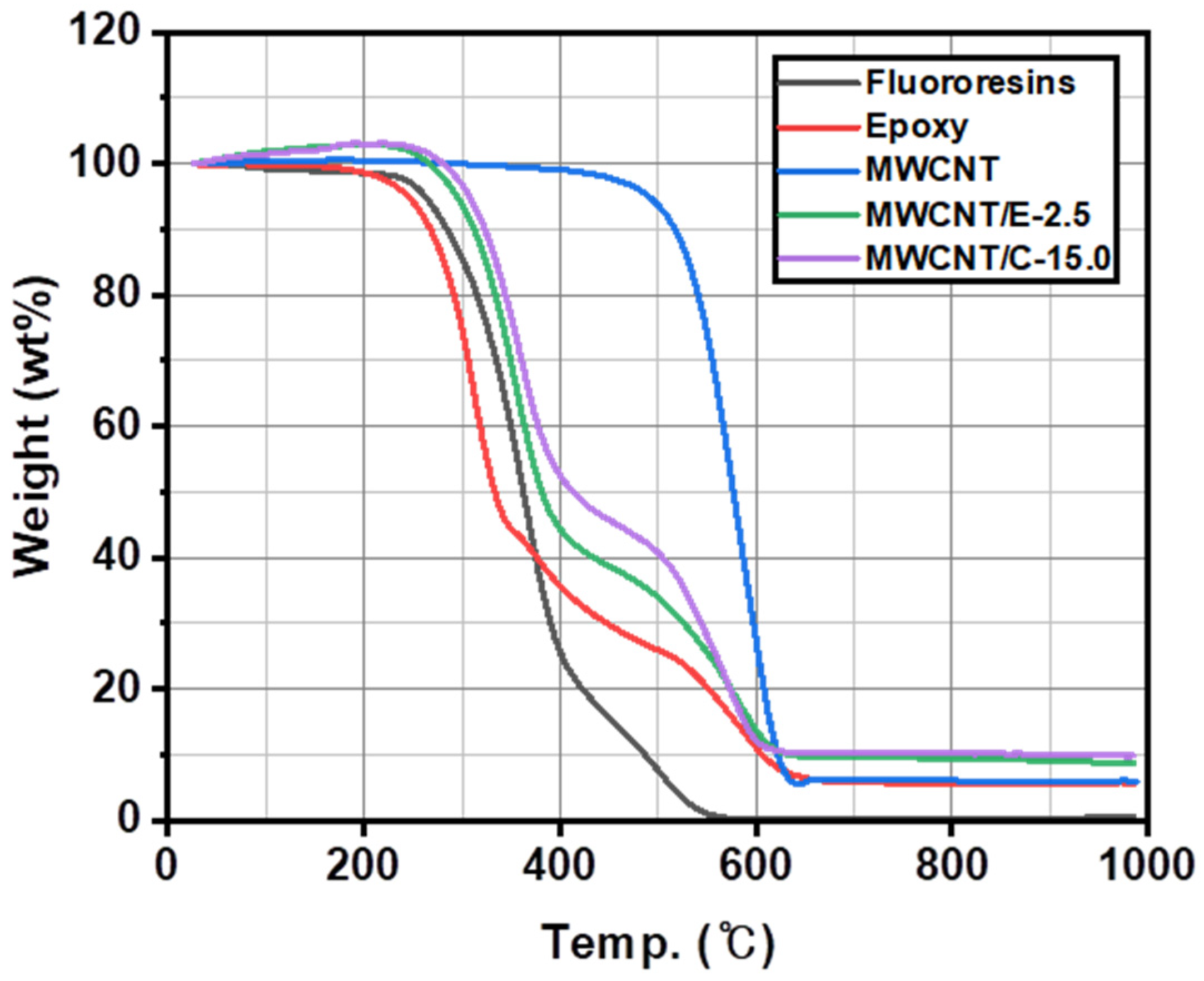
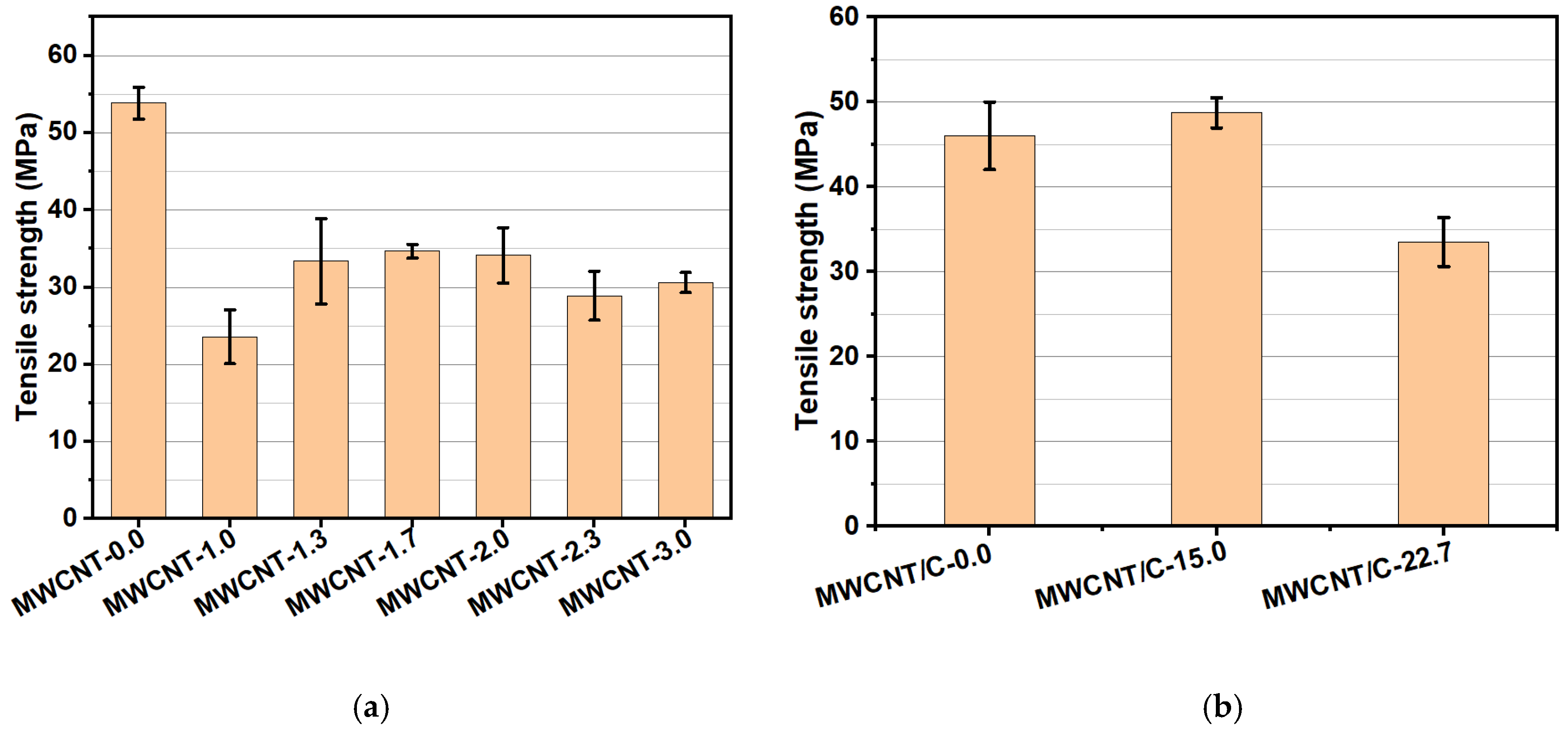
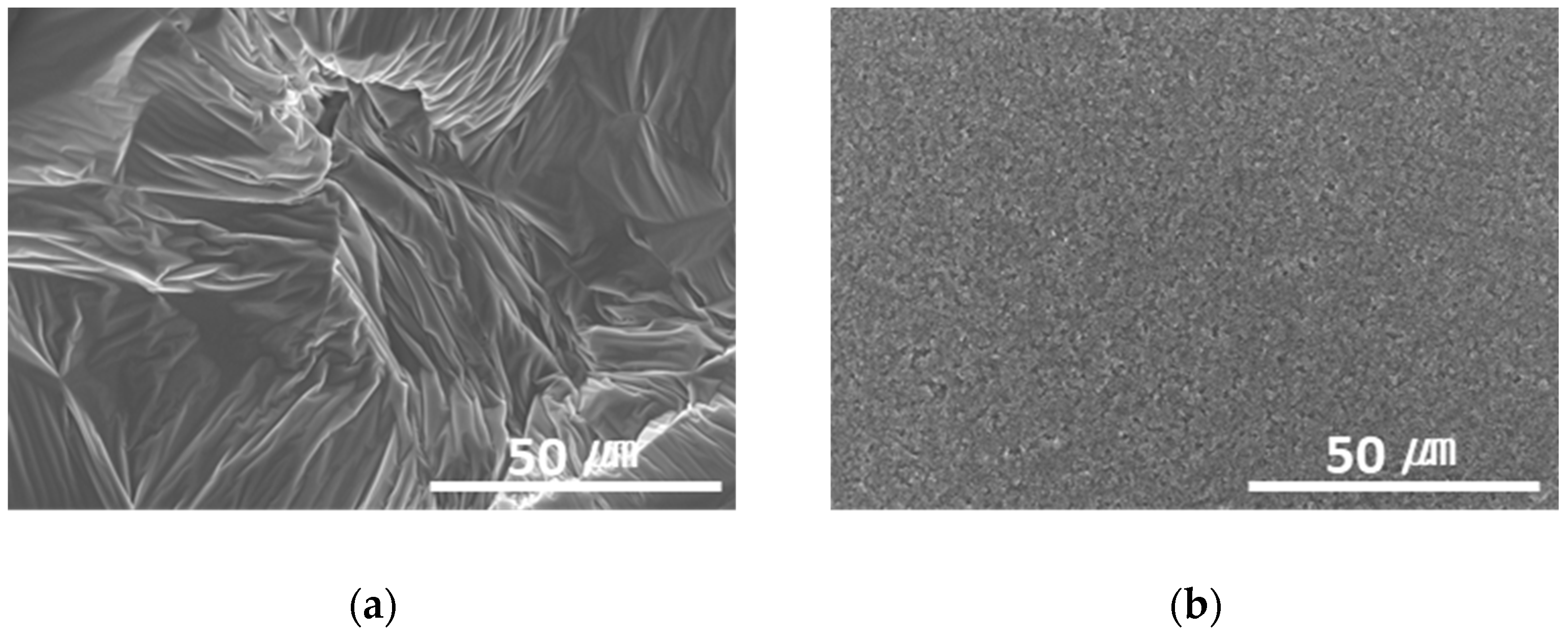

| Component | Content (wt%) | |||||
|---|---|---|---|---|---|---|
| Epoxy | 45.0 | 44.9 | 44.6 | 44.5 | 44.5 | 44.0 |
| Fluororesin | 54.0 | 53.9 | 53.6 | 53.5 | 53.3 | 53.0 |
| MWCNT | 1.0 | 1.3 | 1.7 | 2.0 | 2.3 | 3.0 |
| Total | 100.0 | 100.0 | 100.0 | 100.0 | 100.0 | 100.0 |
| Component | Content (wt%) | ||
|---|---|---|---|
| Epoxy | 67.5 | 55.0 | 50.0 |
| Fluororesin | 30.0 | 30.0 | 27.0 |
| MWCNT | 2.5 | 15.0 | 22.7 |
| SUM | 100.0 | 100.0 | 100.0 |
| Magnification | MWCNT-1.7 | MWCNT-2.0 | MWCNT-2.3 | MWCNT/E-2.5 | MWCNT-3.0 | MWCNT/C-15.0 |
|---|---|---|---|---|---|---|
| 100× |  |  |  |  |  |  |
| 5000× |  |  |  |  |  |  |
| 10,000× |  |  |  |  |  |  |
| Samples | Friction Test (before) | Friction Test (after) |
|---|---|---|
| MoS2 | 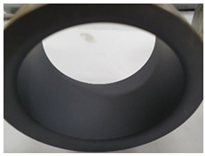 | 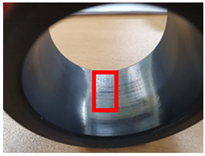 |
| MWCNT/C-15.0 | 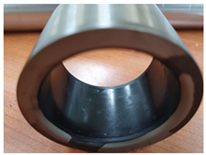 | 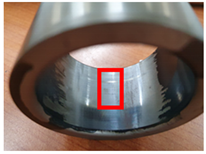 |
| Magnification | Bare Bush | MoS2 | MWCNT/E-2.5 | MWCNT/C-15.0 |
|---|---|---|---|---|
| 100× |  |  | 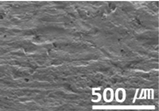 | 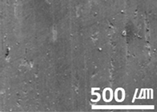 |
| 1000× | 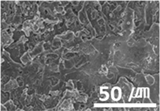 | 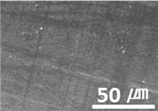 |  | 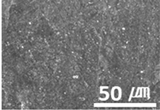 |
| 10,000× |  |  |  | 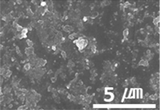 |
| Sample Name | Before | After |
|---|---|---|
| Bush | 0.19 | 0.05 |
| MoS2 | 0.71 | 0.04 |
| Graphene | 4.26 | 4.52 |
| MWCNT-1.7 | 2.15 | 1.03 |
| Polymer Composition | Sample | Tensile Strength | Elastic Modulus |
|---|---|---|---|
| Unit | MPa | MPa | |
| Epoxy:Fluororesin = 40:50(wt%) | MWCNT-0.0 | 54 ± 2.05 | 4227 |
| MWCNT-1.0 | 24 ± 3.48 | 2038 | |
| MWCNT-1.3 | 33 ± 5.52 | 2295 | |
| MWCNT-1.7 | 35 ± 0.89 | 2574 | |
| MWCNT-2.0 | 34 ± 3.58 | 2650 | |
| MWCNT-2.3 | 29 ± 3.19 | 1995 | |
| MWCNT-3.0 | 31 ± 1.03 | 2091 | |
| Epoxy:Fluororesin = 50:30(wt%) | MWCNT/C-0.0 | 46 ± 3.99 | 3595 |
| MWCNT/C-15.0 | 49 ± 1.77 | 4099 | |
| MWCNT/C-22.7 | 34 ± 2.89 | 3356 |
| Sample | Static CoF | Dynamic CoF | Reduction in Static CoF (%) | Reduction in Dynamic CoF (%) |
|---|---|---|---|---|
| Raw (Epoxy + Fluororesin) | 0.27 ± 0.06 | 0.39 ± 0.09 | - | - |
| MoS2-12.0 | 0.08 ± 0.02 | 0.07 ± 0.01 | - | - |
| Graphene-12.0 | 0.19 ± 0.06 | 0.14 ± 0.02 | - | - |
| MWCNT-1.0 | 0.17 ± 0.05 | 0.14 ± 0.02 | 37 | 64 |
| MWCNT-1.7 | 0.16 ± 0.01 | 0.12 ± 0.00 | 40 | 68 |
| MWCNT-2.0 | 0.14 ± 0.01 | 0.10 ± 0.00 | 50 | 76 |
| MWCNT-2.3 | 0.12 ± 0.01 | 0.09 ± 0.01 | 54 | 78 |
| MWCNT-3.0 | 0.15 ± 0.01 | 0.09 ± 0.00 | 44 | 77 |
| Sample | Static CoF | Dynamic CoF | Reduction in Static CoF (%) | Reduction in Dynamic CoF (%) |
|---|---|---|---|---|
| MWCNT/E-2.5 | 0.13 ± 0.02 | 0.12 ± 0.02 | 52 | 69 |
| MWCNT/C-15.0 | 0.12 ± 0.02 | 0.10 ± 0.01 | 56 | 74 |
Publisher’s Note: MDPI stays neutral with regard to jurisdictional claims in published maps and institutional affiliations. |
© 2022 by the authors. Licensee MDPI, Basel, Switzerland. This article is an open access article distributed under the terms and conditions of the Creative Commons Attribution (CC BY) license (https://creativecommons.org/licenses/by/4.0/).
Share and Cite
Kim, J.-H.; Kim, W.S.; Yoo, Y. Friction Properties of Solid Lubricants with Different Multiwalled Carbon Nanotube Contents. Materials 2022, 15, 4054. https://doi.org/10.3390/ma15124054
Kim J-H, Kim WS, Yoo Y. Friction Properties of Solid Lubricants with Different Multiwalled Carbon Nanotube Contents. Materials. 2022; 15(12):4054. https://doi.org/10.3390/ma15124054
Chicago/Turabian StyleKim, Ji-Hyun, Won Seok Kim, and Yungchul Yoo. 2022. "Friction Properties of Solid Lubricants with Different Multiwalled Carbon Nanotube Contents" Materials 15, no. 12: 4054. https://doi.org/10.3390/ma15124054
APA StyleKim, J.-H., Kim, W. S., & Yoo, Y. (2022). Friction Properties of Solid Lubricants with Different Multiwalled Carbon Nanotube Contents. Materials, 15(12), 4054. https://doi.org/10.3390/ma15124054





